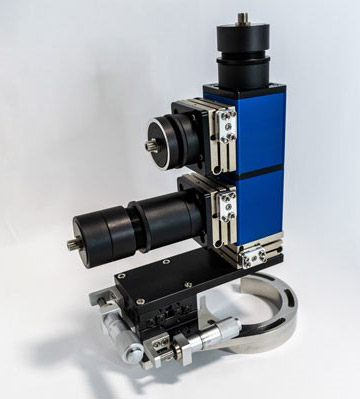News: Suppliers
3 May 2021
k-Space launches spectral reflectance metrology tool for complex thin-film structures
k-Space Associates Inc of Dexter, MI, USA – which produces thin-film metrology instrumentation and and software for research and manufacturing of microelectronic, optoelectronic and photovoltaic devices – has announced the release of kSA SpectR, a complete non-contact metrology solution for measuring absolute spectral reflectance, L*a*b* color parameters, and growth rate.
 Picture: The kSA SpectR spectral reflectance metrology tool.
Picture: The kSA SpectR spectral reflectance metrology tool.
The tool has many applications for in-situ monitoring and process control, including vertical-cavity surface-emitting lasers (VCSELs), distributed Bragg reflectors (DBRs), and other complex device structures. Thin-film production and research facilities can use it in sputtering, molecular beam epitaxy (MBE) and metal-organic chemical vapor deposition (MOCVD) growth methods.
The kSA SpectR optics are configured in a specular reflectance geometry. k-Space utilizes a method that was developed at Sandia National Laboratory and is licensed to k-Space. In this approach, the fitting routine re-starts with each new layer, treating the underlying film stack as a ‘virtual’ substrate. The kSA SpectR can perform measurements simultaneously at multiple wavelengths, each of which offers potential advantages. The tool easily measures custom spectral features such as reflectance minima, maxima, inflection points, or baseline scatter level, over a user-defined wavelength range of interest.
“This tool, like many of our tools, is the direct result of a specific customer need,” says CEO Darryl Barlett. “When the customer came to us, we listened to their measurement requirements and then designed a system, incorporating Sandia National Laboratory’s technology, that worked for their application,” he adds. “As the complexity of thin-film layers advances, so does the need for metrology that measures the right parameters for yield and performance. This system has the capability to work on complex thin-film structures, including applications such as precisely determining the Fabry-Perot dip during DBR growth.”








